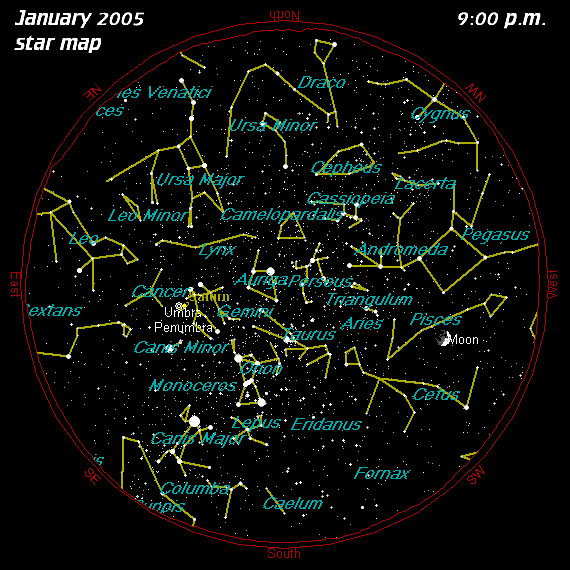



![[Moon Phases]](../moonphases/2005-01-phases.jpg) |
|---|
![]()
![[Mercury and Venus]](12-26-04-mercury-venus.jpg) |
|---|
| Mercury (left) and Venus rise above altocumulus clouds on the morning after Christmas, 2004. Digital photography from 26,000 feet by Gary A. Becker... |
![[Mercury and Venus]](12-26-04-sunrise.jpg) |
|---|
| Sunrise from 26,000 feet on the way to Albuquerque, New Mexico. Gary A. Becker digital photo... |
![[Frijoles Canyon of Bandelier]](12-04-bandelier.jpg) |
|---|
| Bandelier National Monument, 50 miles to the west of Santa Fe, New Mexico, offers visitors a glimpse of Ancestral Puebloan life between 1150 AD and 1500 AD. The contrast in winter temperatures between the south-facing and north-facing canyon walls took me by surprise. You might guess where the people lived. Digital photography by Gary A. Becker... |
![[First Image of Titan's Surface]](1-05-titan-huygens.jpg) |
|---|
![[Huygens Views Titan During Landing]](1-05-titan-landing.jpg) |
|---|
![[Punxsutawney Phil]](1-05-phil.jpg) |
|---|
| Punxsutawney Phil predicted six more weeks of winter on February 2, 1994. Indeed, four weeks later, the Lehigh Valley was socked with one of the deepest snowfalls on record. Way to go, Phil. The upper inset shows Ed Stauffer of Lowhill Township, Lehigh County standing in the plowed roadway that passes his home. All photography courtesy of Adam R. Jones... |
 |
